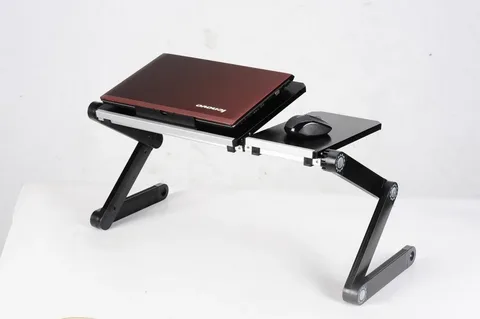The way we work has changed significantly in the last few years. With the rise of co-working spaces and remote work, the typical nine to five office setting has given way to more flexible and dynamic work environments. This development has affected not just how we approach our work but also the design of office furniture, especially when it comes to office tables and laptop tables. With an emphasis on the crucial laptop table, we examine the changing trends and designs that define contemporary office table design in this investigation.
Table of Contents
The Development of Desk Designs:
Office tables that served only as functional pieces of furniture to hold paperwork and desktop computers are a thing of the past. Office table design nowadays combines aesthetics and utility. Modern workspaces require furniture that adds to the overall atmosphere and aesthetic of the area in addition to fulfilling its functional needs.
The trend toward minimalism in office table design is one that is often observed. The modern office table is defined by its uncluttered appearance, straightforward shapes, and clean lines. This design concept encourages order and focus in addition to improving the workspace’s aesthetic attractiveness. Whether you operate in a co-working space or a regular office, sleek, unobtrusive designs help to create a more open and collaborative environment.
The application of ergonomic concepts is a crucial component of contemporary office table design. Office furniture is changing to enhance comfort and health as awareness of the value of employee well-being increases. Office table design today incorporates adjustable height features, ergonomic designs, and user-friendly materials. This change is a reflection of a wider understanding of the connection between higher job satisfaction and productivity and well-designed workspaces.
The Evolution of Co-Working and Its Impact:
Office table design has been greatly impacted by the rise in remote work and the appeal of co-working environments. In co-working spaces, where experts from different domains collaborate, adaptability and flexibility are critical. Office tables can be arranged to meet the unique needs of each user thanks to their modular design.
Common tables are a common feature of collaborative workspaces, encouraging conversation and the sharing of ideas. These tables accommodate the modern professional’s dependence on technology by including built-in power outlets and charging stations. Furthermore, co-working spaces’ aesthetics frequently take cues from a variety of design movements, resulting in a lively and eclectic environment that represents the diversity of its patrons.
Laptop Tables: The Workplace Must-Have:
Professionals now consider laptops to be essential tools in the age of remote work. This change has increased the significance of laptop tables, turning them from optional office furniture to necessary components. There are now more options for laptop tables than only small, collapsible ones for special occasions. To accommodate various tastes and work environments, they are currently available in a range of styles and materials.
One of the most important factors in laptop table design is portability. Numerous professionals operate in a variety of settings, including co-working facilities, coffee shops, and home offices. Consequently, laptop tables are made to be portable and light in weight. Professionals can set up their mobile office anywhere they go thanks to common characteristics like folding legs, compact designs, and materials that blend durability with weight.
Laptop tables can benefit from ergonomics as well as traditional office tables. Features like tilting mechanisms, height adjustments, and integrated ventilation to avoid overheating are also becoming commonplace. Whether working from home or a shared co-working environment, these factors are essential for promoting a productive and healthy work routine.
Function Meets Style:
Modern office table design, including laptop tables, is centered on the meeting point of style and functionality. Combining materials like glass, metal, and wood results in designs that are both durable and aesthetically pleasing. The wide range of colors in the color scheme, from traditional neutrals to strikingly bright shades, lets people show off their individuality in the workplace.
There are other choices for customization as well. Office tables can be customized to personal preferences by selecting from a wide range of finishes, colors, and add-on features offered by many furniture makers. This customization not only makes the workstation more aesthetically pleasing, but it also encourages a sense of connection and ownership.
In conclusion, a blend of style and functionality can be seen in the development of office table design, which has been fueled by the shifting nature of work and the emergence of co-working and remote work trends. Modern office tables and laptop tables, from the sleek and minimalistic to the adjustable and ergonomic, are representative of a workstation that places equal emphasis on utility and style. The way we work will always change, and with it, so will the locations in which we carry out our professional activities. This means that the office table will always play a crucial role in the dynamic landscape of work environments.







